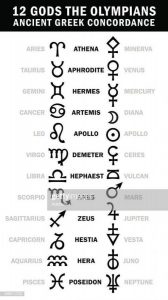 And how do I know this, and why am I so effective? Because, essentially, I am one of them. I’m very liberal-minded and I excelled at academia. While ‘academic sources’ have much to offer, I’ve been forced to see further in order to survive. I watched everyone around me fall prey to “elite sources” & cancel people for any disagreement – and I saw no great reason to resist, as their viewpoints seemed to echo genuine research. But then academia denied my illness, and doctors nearly killed me and left me disabled forever. Having access to independent doctors and affordable choices for insurance saved my life. When I questioned big pharma’s power-grab called ‘Obamacare’ – which limited access to said services for everyone – my friends called me racist, far right, ist ist ism, and I lost my jobs, fans and platform for speaking out about my lived experience. At that moment, I recognized how serious the gaslighting culture was. It didn’t matter if I was right or wrong. These people knew what I went through, yet they were quick to shut me up. Despite their claims to care about marginalized people, they labeled me with the worst intent possible, and refused to comprehend my point of view.
And how do I know this, and why am I so effective? Because, essentially, I am one of them. I’m very liberal-minded and I excelled at academia. While ‘academic sources’ have much to offer, I’ve been forced to see further in order to survive. I watched everyone around me fall prey to “elite sources” & cancel people for any disagreement – and I saw no great reason to resist, as their viewpoints seemed to echo genuine research. But then academia denied my illness, and doctors nearly killed me and left me disabled forever. Having access to independent doctors and affordable choices for insurance saved my life. When I questioned big pharma’s power-grab called ‘Obamacare’ – which limited access to said services for everyone – my friends called me racist, far right, ist ist ism, and I lost my jobs, fans and platform for speaking out about my lived experience. At that moment, I recognized how serious the gaslighting culture was. It didn’t matter if I was right or wrong. These people knew what I went through, yet they were quick to shut me up. Despite their claims to care about marginalized people, they labeled me with the worst intent possible, and refused to comprehend my point of view.
 t even if we are to presume there is only one God, not a single one of us is capable of understanding the nature of God, nor reflecting its totality in ourselves. The best we can do is to embrace the gifts we were given, and offer those gifts to others, while equally appreciating the gifts that were given to others, and humbly accepting when others offer their gifts to us. Simply put, it is humble, loving, and most importantly, honest, to admit that we don’t know what “Godliness” means in totality, and that no singular one of us is capable of reflecting goodness in all aspects.
t even if we are to presume there is only one God, not a single one of us is capable of understanding the nature of God, nor reflecting its totality in ourselves. The best we can do is to embrace the gifts we were given, and offer those gifts to others, while equally appreciating the gifts that were given to others, and humbly accepting when others offer their gifts to us. Simply put, it is humble, loving, and most importantly, honest, to admit that we don’t know what “Godliness” means in totality, and that no singular one of us is capable of reflecting goodness in all aspects. In my community – which values and studies archetypes – I’ve found that the gifts of our own nature end up being useful and inspiring to others. To take this further, the most essential key to my personal ‘religion’ would be to encourage people to recognize and embrace their true nature, and to understand that this nature is one among many which all have potential to vibrate on high frequencies and contribute valuable lessons to the rest of us. This way, there may be self-love and appreciation for ourselves just as we are, as well as harmony between people with many different gifts. But we also may critique ourselves and each other — not by shaming one another for who we are, but rather, by asking ourselves and each other: are you embodying the highest potentials of your archetype? (Needless to say, it is only possible to address this if we all agree to take the study of archetypes seriously and focus on authentic discernments between them, so we gain distance from personal criticism by honoring the archetypal ‘scripture’ which we all interpret together, and use equally to measure our progress.) This leads to a more natural path to self improvement. We are not asking anyone to be something other than they are, but simply helping them to recognize their gifts and encouraging them to embrace them more astutely. If we all strive to do this, then in the end, the group balances many archetypes, and that balance reflects God.
In my community – which values and studies archetypes – I’ve found that the gifts of our own nature end up being useful and inspiring to others. To take this further, the most essential key to my personal ‘religion’ would be to encourage people to recognize and embrace their true nature, and to understand that this nature is one among many which all have potential to vibrate on high frequencies and contribute valuable lessons to the rest of us. This way, there may be self-love and appreciation for ourselves just as we are, as well as harmony between people with many different gifts. But we also may critique ourselves and each other — not by shaming one another for who we are, but rather, by asking ourselves and each other: are you embodying the highest potentials of your archetype? (Needless to say, it is only possible to address this if we all agree to take the study of archetypes seriously and focus on authentic discernments between them, so we gain distance from personal criticism by honoring the archetypal ‘scripture’ which we all interpret together, and use equally to measure our progress.) This leads to a more natural path to self improvement. We are not asking anyone to be something other than they are, but simply helping them to recognize their gifts and encouraging them to embrace them more astutely. If we all strive to do this, then in the end, the group balances many archetypes, and that balance reflects God.On social media, I made the case that a healthy relationship with one’s own eros was an essential component to a healthy marriage. Some people disagreed and believed eros runs out after a few years, and pragma is a healthier basis for a marriage. I was also challenged, essentially, to differentiate eros from perversion. This was my response:
It’s very hard to articulate an adequate response to this in a singular post, as there are a lot of premises people tend to take for granted in these discussions which need to be covered. (I’m not presuming which premises you personally might take for granted; these are deeply human issues and I’m sure many people have thought about it from many angles.) It would be more appropriate for me to write a book or an essay on this, considering how many angles I’ve thought about. I probably will do that. But for now, I’ll try to cover the basics. I apologize in advance if I fail to articulate it on my first try.
So let’s start with this: “Eros exists. So where do we go from there?”
 It is apparent throughout history that cheating is very common. We all know the age-old tale of couples getting married just based on pragma alone, and then finding erotic pleasure outside the home. Thus the warm, stable marriage which “makes logical sense” and “works dutifully” is so often wrecked by cheating and distrust, not to mention extreme resentment. In worst case scenarios, there have been stories where the resentment around “being stuck with this person” who is not fulfilling one’s erotic needs may lead to abuse or, worse, one spouse poisoning the other.
It is apparent throughout history that cheating is very common. We all know the age-old tale of couples getting married just based on pragma alone, and then finding erotic pleasure outside the home. Thus the warm, stable marriage which “makes logical sense” and “works dutifully” is so often wrecked by cheating and distrust, not to mention extreme resentment. In worst case scenarios, there have been stories where the resentment around “being stuck with this person” who is not fulfilling one’s erotic needs may lead to abuse or, worse, one spouse poisoning the other.
Beyond marriage, there are also many symptoms in society of misguided Eros. Porn is a symptom of misguided Eros, as well as Tinder, dating-fucking culture, etc. Religions and lifestyles tend to form as reactions to other religions. Our society was heavily religious and sexually repressed, so in reaction the left formed their own religion which worships the lewd and crude. But what they are doing is very far from Eros. Going to a kink-fest is not erotic in the wholesome and natural sense — that’s a social event with many rules of engagement. Watching porn is also not erotic in the wholesome sense. As for the gay culture, you can’t even talk to them without memorizing a bunch of pronouns that constantly change with the wind.
The idea that we can’t show breasts or nudity without sexualizing it, makes it “taboo,” and causes people to fetishize the human body. This isn’t necessary. If the body and nudity were not “taboo” in normal life, and there was not a constant battle between absolute disgusting debauchery vs. a far-right religious effort to repress erotic hunger, nudity and embodied beauty altogether, perhaps we’d find a more sane, healthy expression of Eros.
Of course, I’m exaggerating both sides of this to make a point. The left is not ONLY debaucherous and the right is not ONLY repressive. But to express the problem with the trend I must present two sides of the dichotomy. Right now, there is no healthy cultural expression of eros and spontenaeity. That’s where I agree with the article I posted, called “Carpe Diem.” There’s one group rebelling against the repression of Eros by being disgusting and making a bunch of rules around how disgusting you’re allowed to be, and another group telling you sexuality or eroticism is only allowed to exist in this one limited spot, and all other expression of it is forbidden. This is *quite evidently* not productive. As you said, the proof is in the pudding.
The question is not: “How do we get rid of Eros?” — History and human nature make it apparent that we cannot. The question is: “What do we do with Eros in a productive way?”
Humans were given Eros for a reason. We crave it for a reason. Are we to say it’s corrupt; an inherently corrupt part of our “bad” nature, or is it a biological imperative that has helped people in some way? I would suggest the latter, and I cannot think of any logical premise upon which to disagree. If we are made in God’s image, then something so basic and enduring as Eros must have been gifted us for a reason. And if one is to say “God gave us Eros so that we’ll repress it and fight against our nature” — I would be the first to reject such a God, as I’d rather burn in hell than worship someone so cruel.
 So I, personally, am a very libidinous and passionate person by nature – but I am turned off by porn, to the point I watched a few minutes once in a friends’ dorms and found myself shaking under the covers. It grossed me out on a systemic level. I’ve had relationships where I connect very deeply to the person and keep them as a friend for life, and married my soulmate — who I recognized as such within days of meeting (and then asked him to marry me). Six years later we’re still thriving, madly in love, and supporting each other. We have a great group of friends, get along with each other’s family, etc. So embracing my erotic and full-bodied attraction to him immediately, clearly worked.
So I, personally, am a very libidinous and passionate person by nature – but I am turned off by porn, to the point I watched a few minutes once in a friends’ dorms and found myself shaking under the covers. It grossed me out on a systemic level. I’ve had relationships where I connect very deeply to the person and keep them as a friend for life, and married my soulmate — who I recognized as such within days of meeting (and then asked him to marry me). Six years later we’re still thriving, madly in love, and supporting each other. We have a great group of friends, get along with each other’s family, etc. So embracing my erotic and full-bodied attraction to him immediately, clearly worked.
But this is not an accident. I trained myself to do this. It is a result of a life of astute study of myself, psychology, and passion.
Since I recognized the danger of eros, even in the first book I ever wrote at age 11-12 about a prostitute – I spent a great deal of time considering productive and heartfelt ways to honor my passion. And it has worked. I can sense quite quickly who I am attracted to on a deeper level; who I connect with; and for me this process of connection is highly erotic. (Even for friends, though please do not read that as “highly sexual,” as I am not preying on my friends.) I am not tricked by “good looking body parts,” which is not to say that I am not attuned to beauty — because I am. But I’m aroused by the deeper process of connecting to someone’s mind and soul; that said, their body is a vessel through which their soul emerges, so small things like how my partner sits or smiles can drive me wild. And after many years of studying my own patterns, studying others, studying psychology and romance itself – I fell into a natural groove which allowed me to understand instantly when my heart gravitates to ‘the right people.’ This helps with friendships too; as healthy Eros also exists in healthy friendships. Eros, in greek, literally means “flow.”
And having embraced a higher vibration of Eros, it made natural intuitive sense to me when my friend from Greece explained that it meant flow. Erotic passion and flow are indeed, one and the same. Rules and regulations often disrupt one’s natural ‘flow,’ so life is always a dance between ethics and flow, passion and reason; the two must be balanced.
Society offers many paths to repress Eros, and also many paths to pervert our sexuality (which is another form of repressing the natural flow that God gave us). My suggestion is that, as a society, we start learning the difference between higher-vibration Eros and perversion. This is the only way we will ever find a healthy balance; for , simply telling people to ‘stop acting on desire’ has never worked historically. Desire always comes back to roost, and once it has been repressed, it comes back in a much more ugly and destructive way.

The main reason I want to self publish is so my characters can be complex, and can evolve in a way that feels organic to me, as a writer – without having rules imposed on them because of their race, gender or creed. It is a fantasy novel, but I still describe my characters, and honor their journeys in a human way. If I can’t do that, I don’t see the point in writing. Therefore, I can’t endure “sensitivity readings.”
To give an example of what I’m up against: I have deep characters of all races. Modern “sensitivity reading” rules would say you can’t describe a black person’s skin as “mocha” because it reduces them to a food. However they have no problem with “vanilla” for white people. And the only alternative they offer to “mocha” is “brown” or “tan.” Worse yet, if your black character is too nice and good, like a sage, it’s offensive because it’s a trope. If she’s too traumatized and makes big mistakes, it’s offensive because she’s a bad stereotype.
When I went on forums to read about this, many black people signed in saying that personally, they were more offended seeing white people described as “vanilla” and other romantic words, while they themselves were only getting words like “brown.” They PREFERRED “mocha,” and things like this, because it’s more romantic. However, others did prefer “brown.” But the general sentiment was “I don’t get why white people care about this so much. To each their own.” Some also mentioned that they prefer having characters who look like them, who are complex and real – like anyone would. Yet, despite the mixed responses among real people whose races are being described, publishers will not publish you if you break many, many rules about how you’re allowed to handle a character of a particular race.
I can’t do this. I need my characters to be REAL. My White, Black, Asian, and Indian characters all have complex personalities and traumas. Some overcome, and some don’t, and it is unrelated to their skin color. I need it to stay that way.
Many publishers, sensitivity readers and writing forums are now suggesting that people don’t describe their characters’ skin, or appearance, at all! But this doesn’t work for me either. I’m a very visual person, who loves people with extreme vigor. So my descriptions of people tend to be poetic, honorable, and symbolic, describing things about their physique or the impression they leave, which leave a strong and poetic impression of the person. Removing their physical appearance defeats the purpose of writing, or having characters, since part of the experience is being immersed in those sensory impressions.
To me, it’s a moral imperative to honor the beauty, complexity, and journey of all my important characters, regardless of what they look like. My books are extremely “character” oriented. They cover themes like trauma and recovery, religious realization, coming of age, love lost, mourning and guilt, self-discovery. I need room for my characters to breathe.. to evolve naturally… without carefully stepping around parameters imposed on them by people who think everything is about race, and who get offended by something they do, based on their gender or creed. It is against my principles to dehumanize people this way, so I feel I need to self publish at least for now.
I would not condone publishing themes that REALLY were amoral, if I had a publishing company of my own. But I guess my morality is just not the same as the common ones today. To me, those seem arbitrary, dehumanizing and restricting.
Modern leftism is a religion, based in guilt – and our society was bred for this type of movement. At our roots, we are a Christian society. The fundamental message we are taught is to feel guilty because Jesus suffered and died for our sins, and to get down on our knees and pray. Likewise, the Leftist religion teaches that black slaves, Native Americans and Mexicans suffered and died for our sins. The message is that we came here and enjoyed greed and gluttony while they were made to suffer. Thus we should feel guilty for the sins of our ancestors and we should get on our knees, bow for the liberal doctrine, and donate money to those members of government who will solve these issues. Once we donated to the church, and now we donate to Democrats – because we are taught to believe that we are fundamentally flawed, and we need to give everything to an organization who will fix our problems.
This is why personally I abhor the idea of original sin. It creates a slave mentality through guilt. A religion like taoism asks you to think. But as a Christian society, we are conditioned into a slave mentality, as a society. So we voluntarily apologize for sins our ancestors committed. White people in huge hordes are literally getting on their knees before black people and apologizing. Guilty people are donating all their money to blm without even realizing that this money goes straight to rich, white democrats. They don’t even bother to ask – they just put the money in the bucket and get on their knees. Then they point fingers at people who don’t follow suit, because they are sinners (now known as ‘racists’).
I can appreciate Jesus, but the religions of guilt and original sin, praying on your knees and giving money to corrupt organizations to ‘fix’ this, has set a precedent for how the left behaves today. And that’s why the religion of leftism works. Once, many members of our society were indoctrinated by churches and catholic schools; now, we are indoctrinated in public schools. And so we believe everyone in society is a sinner (a racist) – and give to the big Daddy who can fix society’s problems. Priests took advantage of little boys whose parents donated money to them, and Democratic governors exploit the black voters who elected them to run blue cities.
These mythologies centered on ‘original sin’ (the Christian bible and the Leftist bible) are both drawing on natural human emotions – but we are conditioned, as a society, to fall in line with the idea that we are ‘fundamentally flawed’ as a people. We are conditioned to shame the people who don’t get on their knees and express guilt simply for existing. Any society who is dominated by guilty sinners on their knees praying to God can also breed hordes of Leftists on their knees apologizing for their ancestors’ wrongs.
Any God that makes me bow on my knees is no God of mine. I call that a tyrant. In my world, my relationship with God makes me greater and wiser, not smaller and more obedient.
And that’s why I was the first of my friends to see through this crap and why I’m not conditioned to fall for it. When I see people forcing conformity and using guilt tactics, I associate it with Satan rather than with God. And I believe that is one reason why I can’t be brainwashed.
Clothing trends for both men and women are degrading in different ways, and also arbitrary.
Neither gender necessarily looks better than the other in dresses and skirts. In some countries men wear kilts. Historically, shoes with heels were FIRST made for men, and later became a trend for women. During various times in history, men wore robes, skirts and tights. In some cultures, men were expected to be more dressed up than women.
There is no reason why a man who dresses up should be called gay or effeminate, and why mens’ clothes should be so fucking boring. When you go to a wedding, the women all have different dresses but there’s only one shape suit that a man can wear. There is no good reason for this, except that society is telling men they should all be uniform and the same, like the army. The message is that the only thing men are good for is lining up like soldiers and fighting for women and children. Mens’ beauty, and value, should not be celebrated.
Of course, in Hollywood mens’ beauty IS celebrated, but I’m talking about day to day life, for people who aren’t rich. Culture has trained us unconsciously to think of men as soldiers who are meant only to defend us and have no intrinsic interest or value. The same way women can be seen as prostitutes, men are sent to die.
Now I’m not saying that men should “dress like women.” The fact that people might read this and think “Oh so you want a man to look feminine” IS the problem. Being boring isn’t masculine.
The problem is today, we have two affordable choices. Men can wear the same degrading clothes that women wear, which make it difficult to walk and move, or they can wear boring ugly trendy common clothes. In other time periods this was not the choices. You could be a man with flair, color and style, without being thought of as “looking like a woman.”
On the other side of things, womens’ trends are explicitly degrading. Almost everything that is considered “hot” is something that cripples a woman. For example, oversized boobs – this hurts womens’ backs and makes it harder to move around. High heels – makes it hard to walk, run, fight, or defend yourself. We have only barely moved past things like the trend in China where womens’ feet were bound. Any trend that is popular for women is one that cripples them.
Aside from high heels and constricting uncomfortable clothing, women are expected to wear at least minimal makeup at a normal job. This makes someone’s skin get worse over time. It also forces her to spend all this money on makeup she might not necessarily enjoy, and makes her spend TIME preparing her face which is probably fine just the way it is.
It’s one thing to wear makeup for fun – as a man or a woman – and I have no issue with it. But being expected to uphold a trend where you cake your face in foundation each day just so you’re accepted at the office, is degrading. Wearing foundation and makeup every day takes a toll on a woman’s skin, not to mention it takes time out of her day and prevents her from doing something interesting, productive or important. When you add up all the time women spend putting on and taking off makeup just to be accepted in an average setting, you might come up with a huge number over the course of a year. Imagine if that time could be spent, say, writing a book?
But that’s still not nearly as offensive as the “heels” that make people walk like a chicken, or “big fake boobs” that hurt their back. Also, clothes that make it hard to move.
There are many ways to dress up super fancy and sexy without restricting yourself, but they’re hard to find. I’ve been very creative and determined in searching out a wardrobe that is both sexy and functional. And that’s sad — if women weren’t culturally pushed to be crippled, this would be the norm. Compare the way we dress to ancient Egyptians, compare our weddings to Indian weddings, compare our wardrobes to Native Americans. Imagine someone looking back on this in 500 years. They would say “Those people in the 2000’s had no taste.” It’s shameful, really.
On CognitiveType.Com – the leading theorist, known as ‘Auburn,’ typed me as SeFi based on facial signals. I have studied Socionics, MBTI, and Jung – and after synthesizing the theories, I agree that at base, I fit SeFi (also known as SEE in Socionics, ESFP in MBTI, SeF in Jung).
The problem is, I struggle with many descriptions of this type – it is often depicted in a shallow, dehumanizing way. There may be reasons for this. Perhaps it is rare for Se leads to take interest in typology. Perhaps many are not inclined to sit at a computer studying abstract theory and delineating fine distinctions, and find the interactive life more compelling. To speak for myself, I never joined forums or learned theories until I was 32, and I only did because chronic illness destroyed my music career, along with any hope of sustaining a job. I refocused my attention on writing fiction, which lead to my interest in archetypes. So here I am, a student of typology who may be able to tackle the widespread misconceptions around Se. My current critique is focused on Auburn’s description – and the general sentiment around the CT forum – because I find their approach most valuable in the field of Jungian functions in its current state. Please keep in mind that although this critique is harsh, I support their community and project unequivocally, and I am a patron. However, since the Se description still hasn’t changed after many of my protests, I told them I would write my own so that people like me could see it’s out there, and process the typing more easily. I am doing this to work with them, not against them.
Myth #1: Se is Addicted to External Stimulation, Sensory Thrills and Pleasure, but Lacks any Internal World
Auburn’s descriptions link Pe to open-endedness, boredom, addiction and stimulation-seeking. As a result, people in his community have postulated that Se seeks stimulation and pleasure – but these quests are extraneous to any function. Everyone seeks stimulation, which is why ‘deprivation chamber’ is an age old torture device. As for pleasure – how you define ‘pleasure’ could be a topic of its own. “What is Pleasure?” “What do you find Pleasurable?” This requires exploration before shoving the idea of ‘pleasure’ into one function. Personally, I find my inner world much more enticing than anything external. I cannot imagine what it’s like to be ‘bored’ and, although I surround myself with beauty, I don’t seek sensory experience for its own sake.
 As an Enneagram 4, my most ‘childish’ and ‘selfish’ need is to explore and express my inner world – and be admired for it. If you strip me down to nothing but base instinct, I’m still not an ‘escapist’ or ‘pleasure seeker’ but rather, someone that needs to transform my suffering into something beautiful that is uniquely mine, and thus be loved, seen and desired – despite my flaws, brokenness and shame. Therefore, I am not drawn to waste time indulging my senses with extraneous experiences that distract me from this process. The carnal world is an inspiration, a mirror, a stage – a means to explore and express my innermost essence (and, by extension, discover what essence is). I see feelings reflected in the weather, ideas reflected in colors, archetypes in the elements, humanity in animals… “as above, so below.” The most compelling indulgence, for me, is the quest to unveil my heart on such a deep level that its pulse reflects the rhythm of the world – and capture that experience in artistic form.
As an Enneagram 4, my most ‘childish’ and ‘selfish’ need is to explore and express my inner world – and be admired for it. If you strip me down to nothing but base instinct, I’m still not an ‘escapist’ or ‘pleasure seeker’ but rather, someone that needs to transform my suffering into something beautiful that is uniquely mine, and thus be loved, seen and desired – despite my flaws, brokenness and shame. Therefore, I am not drawn to waste time indulging my senses with extraneous experiences that distract me from this process. The carnal world is an inspiration, a mirror, a stage – a means to explore and express my innermost essence (and, by extension, discover what essence is). I see feelings reflected in the weather, ideas reflected in colors, archetypes in the elements, humanity in animals… “as above, so below.” The most compelling indulgence, for me, is the quest to unveil my heart on such a deep level that its pulse reflects the rhythm of the world – and capture that experience in artistic form.
When presence is most intense, the timeless and eternal reveal themselves. This is why I describe my experience of the world as “So carnal, it’s spiritual.” But presence is not about ‘seeking stimulation and pleasure,’ nor does it have to be about experiencing something outside myself. In fact, seeking stimulation would impair ‘presence,’ because it implies a refusal to immerse myself in the ever-evolving now.
It also impedes ‘presence’ to actively run away from something inside. Some people are more invested in their internal world than others – and Fi certainly more invested in ‘personal identity’ than Ti – but running away from the internal would mean not being ‘present’ with the situation as it is. In order to attain focus, presence and flow – which Auburn linked to Se in his description – the mind, body and senses need to move with the current of the external and internal world.
 Presence is about existing at full voltage. Being saturated with my project, the relationship, the conversation, the performance, the mood, the inner turmoil, the narrative unraveling from inside me, the music as it penetrates my being, the ideas someone else is communicating, the flavors of a story as I voraciously devour it, the onslaught of emotion, the throes of my will, the rhythm of accomplishment, the flame of creation, the dance of seduction, the thrust of combat, the anger, the passion, the desire, the catharsis, the ‘flow.’ I choose my destiny and pursue it willfully, then immerse myself in the process as it unfolds – and the cosmos reveals itself, just as it is.
Presence is about existing at full voltage. Being saturated with my project, the relationship, the conversation, the performance, the mood, the inner turmoil, the narrative unraveling from inside me, the music as it penetrates my being, the ideas someone else is communicating, the flavors of a story as I voraciously devour it, the onslaught of emotion, the throes of my will, the rhythm of accomplishment, the flame of creation, the dance of seduction, the thrust of combat, the anger, the passion, the desire, the catharsis, the ‘flow.’ I choose my destiny and pursue it willfully, then immerse myself in the process as it unfolds – and the cosmos reveals itself, just as it is.
Many Se leads would not share my priorities and interests – but all will experience flow, vitality and presence – since these principles underlie Se. You cannot be present while simultaneously obsessing about possible stimulation elsewhere. The reason Se seems more physical is not because Se leads are all hedonists – but because they are more tuned in to the singular trajectory of events at hand.
Ne is aware of alternate realities and possibilities, but there is no parallel for Se. The difference is not that Se leads seek ‘sensory stimulation’ but, rather, that they are engulfed in whatever dynamic experience they are currently focusing on – be it a conversation, a feeling, a sport, or a philosophical meandering. It is evident in Auburn’s chats that groups of Se-valuers tend to flow with one topic, moving from A to B to C to D, whereas Ne conversations are divergent, moving from A to F to Z and back to C. This is why Ne-Si picks up ‘synchronicities’ and ‘parallel realities,’ while Se-Ni is holistic and encapsulates ‘as above, so below.’
Myth #2: Se is an Open-Ended “Empty Vessel” who follows Addictions and Whims with no Direction or Willpower
Any type might have a grand sense of purpose, and any type might not – but each type has a specific way of getting their needs met. Pe leads are hunter-gatherers and willful pursuers who pick up patterns in the world and turn trends in their favor. Pe leads may or may not be motivated, visionary, or outgoing, but regardless, Pe takes in the world at lightning speed and interacts with it without hesitation.
 I live in a near constant ‘flow’ state because I allow my emotions, ideas, and experiences to saturate me fully, and to flow through me in a dynamic current as things evolve. I direct this flow toward the things I want in the grand scheme – and due to my general awareness and presence, I know where to go in the real world in order to bring my dreams to life – in big and small ways. This is emphasized in Jung’s Se ‘realism’ and Socionics Se ‘volitional force’ – but Auburn leaves ‘realism’ out of the description and is hesitant to ascribe Se any willpower.
I live in a near constant ‘flow’ state because I allow my emotions, ideas, and experiences to saturate me fully, and to flow through me in a dynamic current as things evolve. I direct this flow toward the things I want in the grand scheme – and due to my general awareness and presence, I know where to go in the real world in order to bring my dreams to life – in big and small ways. This is emphasized in Jung’s Se ‘realism’ and Socionics Se ‘volitional force’ – but Auburn leaves ‘realism’ out of the description and is hesitant to ascribe Se any willpower.
It appears to me that Auburn is attempting to draw a parallel between Se and Ne, where both are empty vessels seeking stimulation, wide open to new experiences – but neither is willful. Although he would agree that any type can be willful as a ‘whole person’ with a full set of functions, he ascribes willfulness to functions that are extraneous to Pe, and makes Ne and Se – as independent entities – both equal in their aimlessness. Yet the database shows that Se leads – no matter how fantastical their mind – are quite able to ‘get what they want’ in reality. In the case of intuitive leads, additional functions are necessary to help them conquer the ‘real-world’ – but for a Se lead to have realistic aspirations and impose their will upon concrete objects, all they need is Se.
It is difficult to justify Auburn’s ‘trickster’ archetype for Se, not to mention ‘seductive sensualist’ and ‘rebellious delinquent’ – without incorporating realism and will. Not all Se leads will have a grand sense of purpose – but all will know how to get what they want from the world in the moment. Note: Jung agrees.
 The flow of achievement can be spiritual for me: I align myself with nature, feel its power in my hands – and channel that vital force to actualize my will. Auburn theorizes that I have developed Ji and Je – but this fails to explain the automatic interactive relationship with the environment, moment to moment, which fuels my cathartic creation process.
The flow of achievement can be spiritual for me: I align myself with nature, feel its power in my hands – and channel that vital force to actualize my will. Auburn theorizes that I have developed Ji and Je – but this fails to explain the automatic interactive relationship with the environment, moment to moment, which fuels my cathartic creation process.
On a larger scale, I have always possessed a strong sense of purpose, and I believe this phenomenon is extraneous to type. This is consistent with his database: I’ve had a clear sense of purpose all my life while my husband, a TiSe, has not; Jordan Peterson, a brilliant Je lead, found his purpose later in life; Trent Reznor, SeTi with no J development, possessed vision and purpose from a young age; Kurt Cobain, SeTi, fought harrowing medical conditions to chase his vision; etc. Auburn may argue that these visionary people don’t comprise ‘the average Se lead’ – but a solid principle should not have outliers. Any reasonably functional Se lead in the database possesses vitality, focus, presence, volition, force, flow – which means it is a good baseline for Se – while the rest is incidental.
Myth #3: Some people are Open-Ended and Random, just like Children, and there’s Nothing Wrong with it
Auburn ascribes ‘willful purpose,’ ‘overcoming’ and ‘heroism’ to Je, ‘meaning’ and ‘values’ to Ji, and ‘shamanism’ and ‘narrative’ to Pi – while linking Pe to a childish need to explore random stimulus, a risk of ‘falling prey’ to addiction, and a default state of ‘boredom.’ His mythologies link Pe to ‘tricksters’ and ‘puers,’ full of naive wonder (Ne) and pan-like delinquency (Se). I love the archetypes, and agree with youthfulness (Pe) being placed in opposition to senex energy (Pi). The problem is, there’s no acknowledgement of purpose, preference, specificity or independent will.
Auburn emphasizes that Pe is random, open-ended and directionless – including the geniuses, sports stars, composers and scientists. When I asked about Einstein – a Ne lead with no other function development – Auburn suggested his discoveries relied on strong elements of ‘luck.’ I pointed out that when Se leads do amazing sport stunts, it requires practice – but Auburn insisted they can ‘just do that.’ The description proposes that Se leads are wired to figure out the components of physical motion just by watching, and then mimic it. Funny, I was so horrible at this that my mother had to explain to me in words how to tie my shoes, whereas my brother just figured it out – and I left every dance class crying because I could not copy the motions for the life of me. Parsing out impersonal components is Ti, not Se. When I asked other SeFi’s about this, none of them were able to parse out the movements naturally either. There may be exceptions, but none that I’ve spoken to personally.
 I was known as a child prodigy in music, but lo and behold, I started practicing for hours each day at age four. Who knew that Pe leads could willfully set their mind to something and achieve it through dedication? Who knew they might interact with the environment in a way that might be deliberate?
I was known as a child prodigy in music, but lo and behold, I started practicing for hours each day at age four. Who knew that Pe leads could willfully set their mind to something and achieve it through dedication? Who knew they might interact with the environment in a way that might be deliberate?
If we are to run with the archetype of ‘youthful explorer,’ let us not forget: the most adventurous of children are willful, know what they want and find a way to get it. This hunter-gather mentality is a staple of the adventurer’s mind, and there is tremendous will embedded in its fabric.
Myth #4: The Descriptions are Fair and Equal, Based on Data
Let’s face reality: associating Pe with empty-headedness is dehumanizing, and equating it to addiction and directionlessness is pathologizing. The CT community has offered many excuses, including: “These descriptions encapsulate the average person, and you’re not average.” Well gee, thanks – but if these descriptions are about average people, why is Fe focused on heroism, and why are Ni leads equated to shamans? The message is: “At your best, your type can excel at edginess and stunts – whereas the baseline of normalcy for Ni types is to be a shaman.” Lovely!
 During a round of argument about the Se description, Auburn asked me: if a high percentage of Se leads are drug addicts, is it wrong to put that in the description? It’s not wrong – but make sure the description also has room for the Se leads who excel to great heights, like Trent Reznor, Kurt Cobain, Hemmingway and Foucault. And for cripe’s sake, give credit where it’s due and include a paragraph on realism and holeism.
During a round of argument about the Se description, Auburn asked me: if a high percentage of Se leads are drug addicts, is it wrong to put that in the description? It’s not wrong – but make sure the description also has room for the Se leads who excel to great heights, like Trent Reznor, Kurt Cobain, Hemmingway and Foucault. And for cripe’s sake, give credit where it’s due and include a paragraph on realism and holeism.
Bad trends show up (drug addiction, oversexed behavior, delinquency) – good trends show up (brilliant music composers) – but CT is responsible for which ones they decide to include, and right now, it’s quite one-sided. Some descriptions are human and balanced, like the Fi description, which is a masterpiece. Others are dehumanizing either because they are glorifying (Ni, Fe) or infantilizing and pathologizing (Se and, to a lesser degree, Ne).
Considering the Ni description has room for shamans, the Se description should also demonstrate what Se lead geniuses look like – paying tribute to great athletes as well as the trend of Se leads who are groundbreaking composers. He could also mention that he has discovered a trend of computer programmers typing as Se, and attempt to illustrate why this trend shows up. At the very least, the description could provide an avenue to demonstrate how purpose manifests in a reasonably capable, intelligent adult.
It may be fair to say the average modern human is addicted to external stimulation and that the media culture has trained us to expect instant gratification – but it is not correct to link this sin to any function, when outliers appear among all types, and exceptions appear within the types to which he ascribes directionless gluttony. I cannot presume to know what Auburn thinks or feels but, as a reader, I sense he needed to use some type as a dumping ground and blame it for society’s downfall.
I know this is not the case, and that he has made every effort to be fair, open and precise. I know he has good reasons for leaving the description the way he did, and that over time, as he sees more evidence, he will readdress this. But I am being honest about my reaction to it, and I know I’m not the only Se lead who has responded this way. I’ve heard this often enough that I feel compelled to address my thoughts on Se publicly, and share what the descriptions are missing – especially since I am so vocal about my support of the CT community at large.
Bottom line: in Jung’s book, realism is the foundation of Se, and where there is realism, there is also volition and force. These attributes must be ascribed to Se in a very central way for it to have any meaning at all.
 Things have changed – obviously since we discovered Pluto that has been linked to Scorpio, and Mars to Ares etc. But everyone knows that Mars used to be linked to Scorpio. This is common knowledge. No one talks about Hephaestus and Vulcan being linked to Libra. Why?? What is the point of declawing it? Hephaestus is much less glamorous than the others but at least has a personality, whereas modern internet astrologers outright admit that Libra is the only sign who is associated with an inanimate object instead of a God or Goddess or animal. Seriously what the hell is wrong with them??? This is what came up first for each on Google:
Things have changed – obviously since we discovered Pluto that has been linked to Scorpio, and Mars to Ares etc. But everyone knows that Mars used to be linked to Scorpio. This is common knowledge. No one talks about Hephaestus and Vulcan being linked to Libra. Why?? What is the point of declawing it? Hephaestus is much less glamorous than the others but at least has a personality, whereas modern internet astrologers outright admit that Libra is the only sign who is associated with an inanimate object instead of a God or Goddess or animal. Seriously what the hell is wrong with them??? This is what came up first for each on Google:Modern astrology says (and I’ve seen this written) that Libra is the only sign that has no Gods or animals, just an inanimate object. Then, they characterize it as having no mind of its own and being a passive aggressive pushover. Meanwhile this is a cardinal air sign. Most Libras I know are keen on justice and create beauty, but not necessarily to manipulate people. Air is removed. Tactical. These people know what they want to prove and they do it, with artistic panache.




